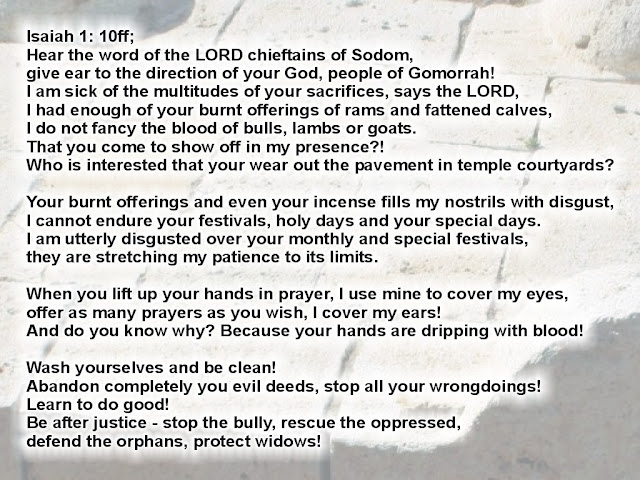This
table attempts to differentiate levels of sacrificial practice while
further distinguishing between social/secular and religious functions.
The primary function
of sacrifices (food and animal) was simply eating together. The person
or persons bringing the sacrifice, together with invited guests or the
sacrificing community ate together. On the religious side, this eating
together(commensality) was perceived as extending to the divine realm.
The act of sacrificial meal interconnected human and divine participants
around one feast. Almost certainly all major communal meals and feasts
as well as special holidays and large family meals were perceived as
sacrifices, in which divine and human participants participated
together.
A secondary function
of the sacrifices established a more or less equal community around
this meal. All members of society participated and were fed. Ritual
slaughter of the animals inevitably led to the control of brutality.
Individual animal victims were carefully selected and treated
individually with prayers and other rituals thus excluding practices
known from industrial slaughterhouses.
The
religious dimension on the other hand help to deal with feelings of
guilt from killing this individualized (individually perceived) victim.
In a little sinister twist, divinity was made participant and accomplice
in this slaughter thus providing further protection from guilt or
possible revenge by the animal kin or its divine patron.
The terciary or objectionable functions started to developed especially with progressing urbanization
in larger communities with larger degree of alienation of individuals.
Sacrificial feasts became means for social and political patronage and
in the religious realm it had the tendency to deteriorate into the
mercantile logic of give and take with assumed divine participants.
The dynamic nature of these functions and their diachronic distribution will be a subject of the next slide.
| 









No comments:
Post a Comment